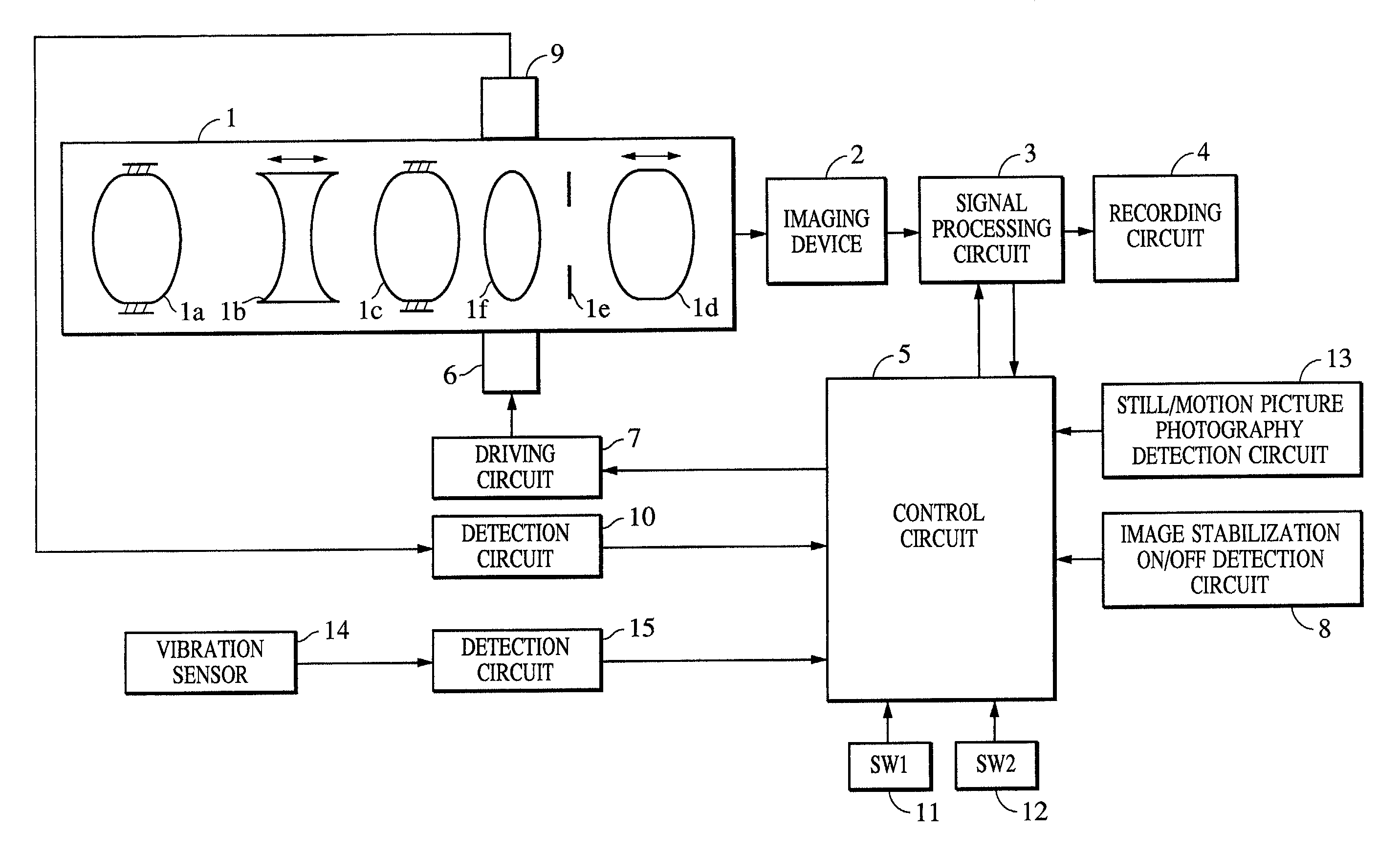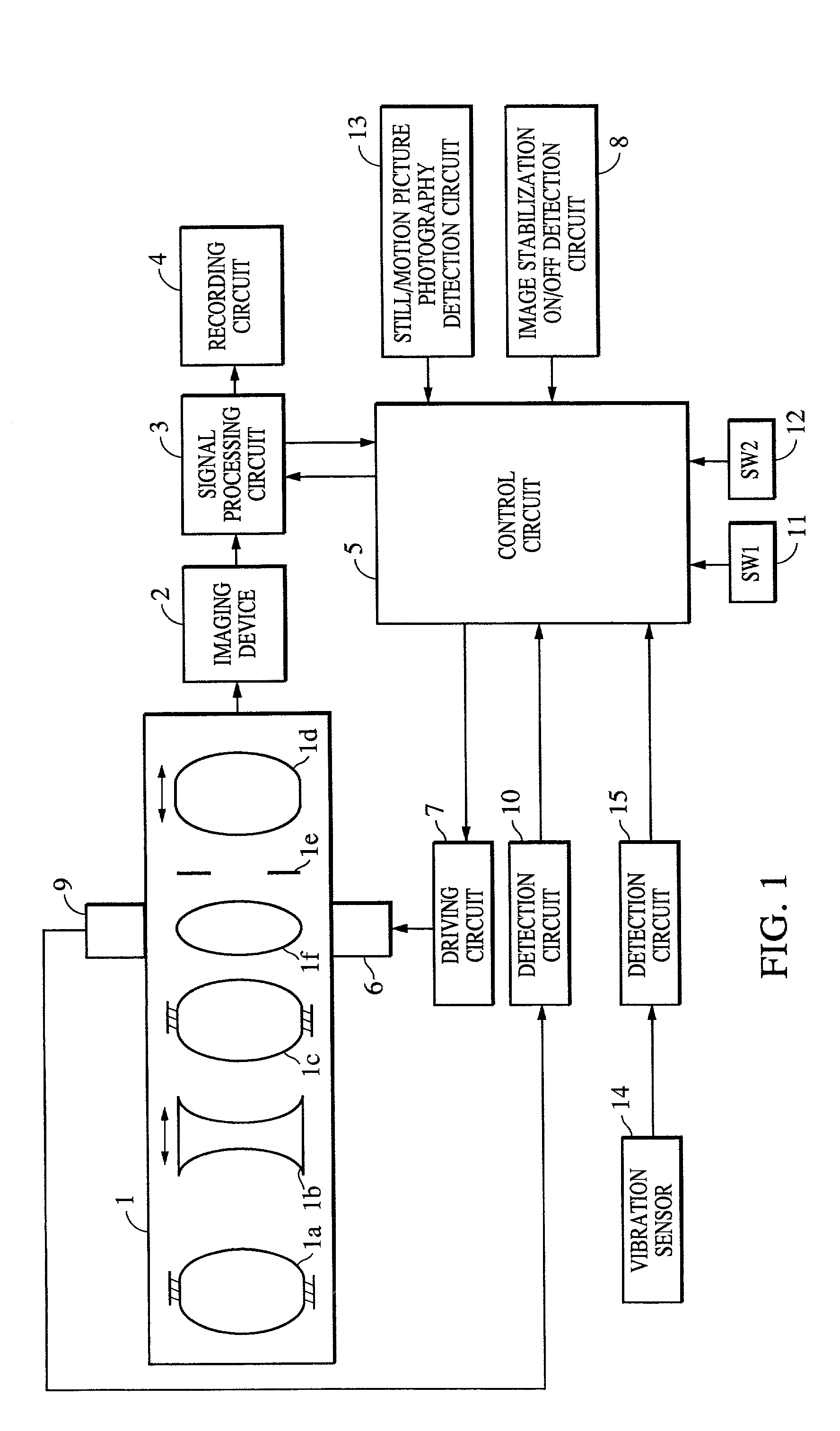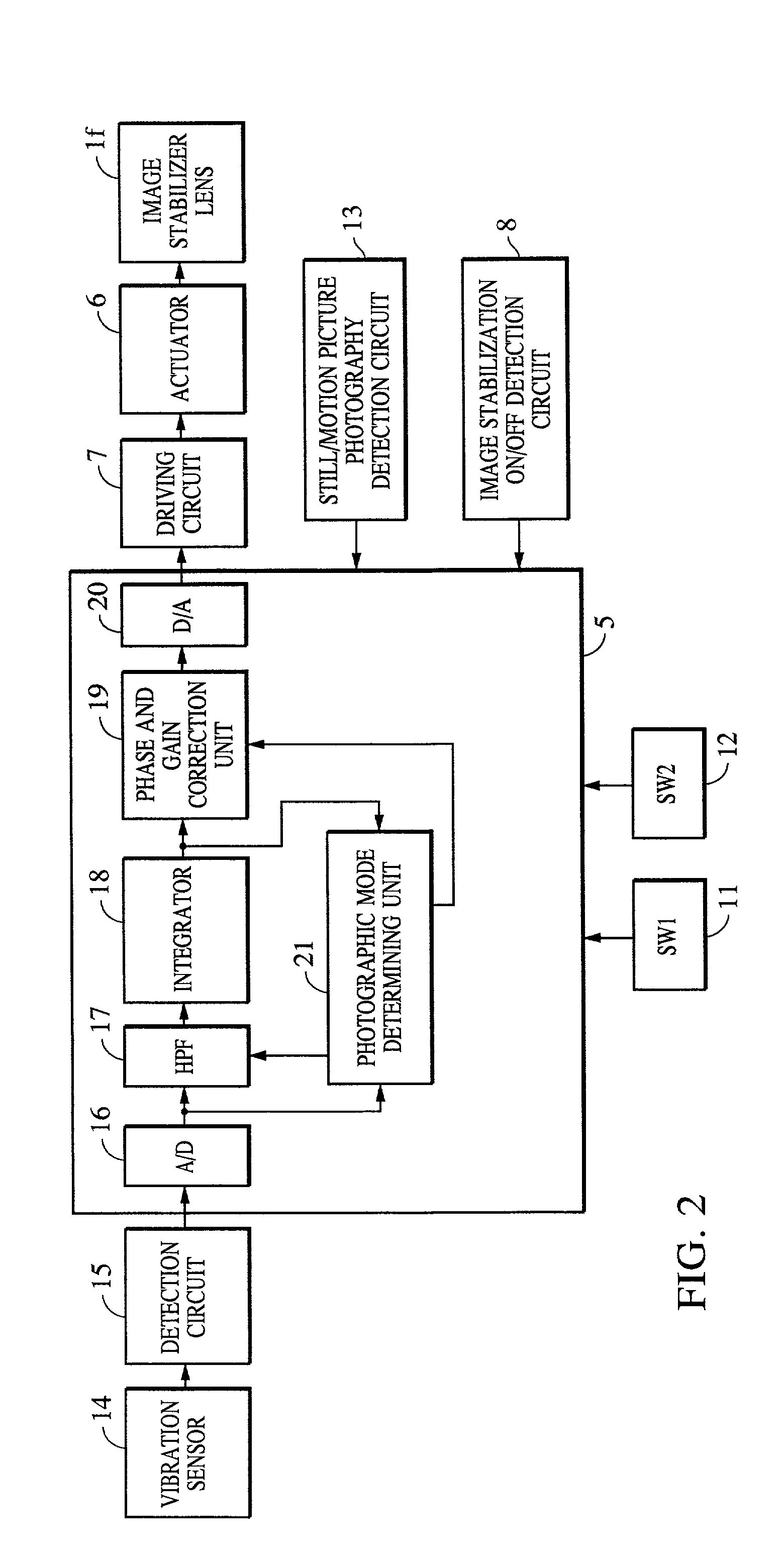Photographing apparatus having variable image blur correction control characteristics for still photography and motion picture photography
a technology of still photography and control characteristics, applied in the field of improvement, can solve the problems of low resolution image blurring and insufficient high-frequency response, and achieve the effect of effective image stabilization
- Summary
- Abstract
- Description
- Claims
- Application Information
AI Technical Summary
Benefits of technology
Problems solved by technology
Method used
Image
Examples
first embodiment
[0025]FIG. 1 is a block diagram of the circuit structure of main components incorporated in a camera according to a first embodiment of the present invention.
[0026]In FIG. 1, a photographing lens 1 of the rear focusing type includes a front element 1a, a zoom lens 1b, a fixed lens 1c, a focusing lens 1d, an aperture 1e, and an image stabilizer lens 1f comprising a vari-angle prism. The camera further includes an imaging device 2 such as a CCD (charge coupled device), a signal processing circuit 3, a recording circuit 4 for recording still pictures and motion pictures, a control circuit 5 such as a microcomputer, an actuator 6 and a driving circuit 7 which drive the image stabilizer lens 1f, an image stabilization ON / OFF detection circuit 8 for detecting whether an image stabilizing feature is ON or OFF, and a sensor 9 and a detection circuit 10 which detect the position of the image stabilizer lens 1f.
[0027]Each of a switch (SW1) 11 and a switch (SW2) 12 is turned on and off in ass...
second embodiment
[0046]A second embodiment of the present invention is intended to photograph pictures when a camera is fixed and stationary without being vibrated, such as when the camera is mounted / installed, or the camera is attached to a tripod. In this case, in order to prevent image blur caused by variations in low-frequency D.C. signal output, which are converted into vibration signals to activate the image stabilizer lens 1f, a stationary decision is performed in which, once a camera has been detected as stationary, the image stabilizer lens 1f is driven at a high frequency region so as to prevent image blurring. As control characteristics are made different for still picture photography and for motion picture photography, as in the first embodiment, conditions for the stationary decision also vary. Thus, the stationary decision has a variable characteristic depending upon the control characteristics.
[0047]A camera according to the second embodiment has the same circuit structure as that sho...
third embodiment
[0061]FIG. 6 is a block diagram of main components of a camera according to a third embodiment of the present invention. The same reference numerals are given to the same components as those in FIG. 1, and the description thereof is thus omitted.
[0062]A two-stage operation button including switch SW111 and switch SW212 is collectively indicated as a photo switch 23. The camera further includes a motion picture recording switch 24, and a motion picture recording detection circuit 25. The motion picture recording switch 24 is used to record motion pictures which are photographed, and is toggled to repeat record and stop operations. As the motion picture recording switch 24 enables recording of motion pictures to start and stop, the motion picture recording detection circuit 25 outputs a signal indicating whether or not a motion picture is being recorded.
[0063]According to the third embodiment, the photo switch 23 is used for still picture photography, and the motion picture recording ...
PUM
 Login to View More
Login to View More Abstract
Description
Claims
Application Information
 Login to View More
Login to View More - R&D
- Intellectual Property
- Life Sciences
- Materials
- Tech Scout
- Unparalleled Data Quality
- Higher Quality Content
- 60% Fewer Hallucinations
Browse by: Latest US Patents, China's latest patents, Technical Efficacy Thesaurus, Application Domain, Technology Topic, Popular Technical Reports.
© 2025 PatSnap. All rights reserved.Legal|Privacy policy|Modern Slavery Act Transparency Statement|Sitemap|About US| Contact US: help@patsnap.com



